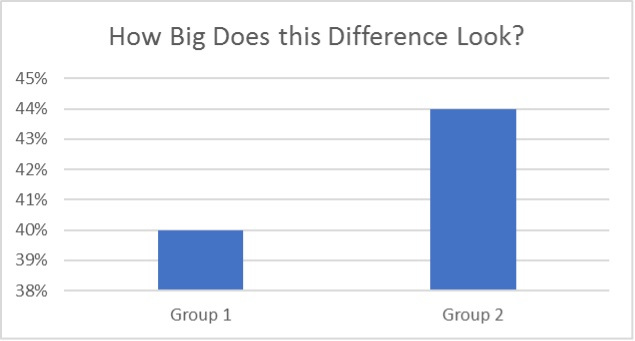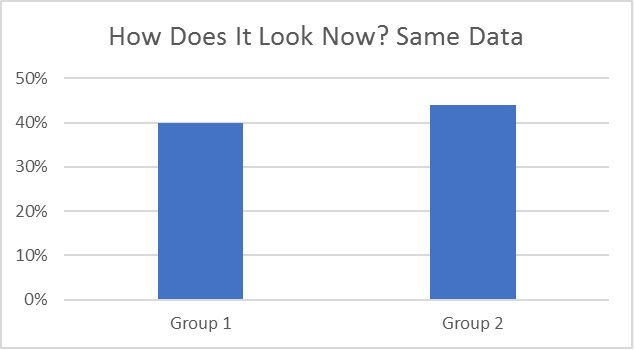How to Tell Fact From Fiction With Health Information on Social Media
Getty/Anton Melnyk
Is that post your family member or friend just made on Facebook legit? Follow a few best practices to start deciphering fact from fiction like a pro.
With so much health information on social media, it can be difficult to know what’s accurate and what’s not. In a recent study of Facebook and Twitter posts published in Health Psychology, researchers found many claims about alternative therapies that aren’t based in evidence. There were many erroneous critiques of standard treatments too. When snippets get spread on social media, distortions of fact travel fast.
We’re all subject to this misinformation. So, to make good health decisions, we have to judge the quality of what we see. That can be difficult, even for experts at times.
How Do We Judge Information Quality?
I’m not a medical professional, so I can’t advise on health information per se, but I am a former research director. I’ve been trained and trained others to evaluate information credibility. Here are a few red flags to watch out for.
Inflammatory language: For example, the post “Marijuana kills cancer cells government finally admits” is false information. In the study, about 30 percent of people thought it was true or mostly true. Such adamant messages are likely political, not evidence-based. Their goal is to persuade. Often the goal is to undermine standard medical advice. This approach might be used to oversell accepted medications or practices too. But why would people believe such a claim?
Confirmation bias: Confirmation bias is a common reason why we might accept false information as true. When there’s something we strongly believe, even if unconsciously, it filters our perceptions. If I distrust government, or the medical establishment, or alternative therapies, I’m primed to reject their claims. The reverse is true too. If I trust these systems, I’m inclined to think they’re right. Either way, I’m unlikely to scrutinize the information. Just being aware that we all do this can help us reflect and avoid getting caught in our own filters. So, what about information sources?
Source of claims: Does the post include the source of the information being shared? If yes, that’s a good sign. At least it gives you the information to check it out yourself. Is the source a professional association (such as the American Medical Association), medical university or health-related federal agency (such as the Center for Disease Control or the National Center for Complementary and Integrative Health)? If not, what are the affiliations of the people or organization being cited? What’s the source of their funding? Sometimes that can create conflicts of interest that jeopardize objectivity. A good practice is to check multiple sources.
Often, people share their personal health stories. These can be important for knowing what others are experiencing, but don’t generalize from them. Don’t assume this is the way it works for everyone, or even necessarily for anyone else. What works for some people, might even be detrimental to others.
Bold claims: Be skeptical! Bold claims are similar to inflammatory language but lack the fire. They’re simply straightforward, declarative statements. The problem with these proclamations can be that they leave out important information, caveats, and qualifiers that can be vital to health decisions. For instance, side effects, drug interactions, or conditions under which the claim doesn’t hold true. When you see these posts, look for an attached article that offers more information. If there isn’t one, skip the post.
Outdated findings: Research typically begins with exploratory and small pilot studies where findings can inform subsequent larger, lengthier, more complex studies. Through this testing process, more knowledge is gained, so findings and recommendations may change. But sometimes a preliminary finding captures public imagination and keeps getting passed around even though the scientific evidence no longer supports it. Be sure to check dates of articles or studies attached to social media posts. If they’re a few years old, newer information may exist.
Visual statistics: The way data is framed can misrepresent reality. This problem is easier to show than tell.
What’s your first, quick impression about the difference between the two bars in these graphs?
The second graph presents an accurate depiction of the difference, which is only four percentage points. By altering the scaling on the vertical axis, it can look larger or smaller. When you see data visualizations, keep this in mind and look at the actual numbers.


High post activity: Some social media posts get a huge number of likes and shares. That can be for many reasons, not necessarily credibility. A health problem a lot of people are experiencing or worried about or a post from an influencer or celebrity can get a lot of traction. Also, many people share posts without reading the attached article, if there is one, or having skimmed the post quickly—rather than giving thought to the message. Don’t equate information credibility with high activity numbers.
Credible Sources to Check
Sometimes, the accuracy of health information on social media is just really difficult to determine. Plus, a lot of complementary and alternative treatments haven’t been adequately studied, so little or no scientific evidence of safety or effectiveness exists. That doesn’t mean, if it’s natural, it can’t hurt even if it doesn’t help. That’s a common false belief that leads to confirmation bias. Some botanicals can be toxic in large doses or interact with medications, for instance. Here are some resources for finding credible information.
The National Institutes of Health website can search on specific health topics. Within the NIH, there’s the National Center for Complementary and Integrative Health. On its site you can see Herbs at a Glance and Be an Informed Consumer. Know the Science is a simple, user-friendly way to walk through a few examples to show you how health information gets reported and sometimes what’s missing or misinterpreted.
Another NIH resource is MedlinePlus. The National Library of Medicine for the general public with materials in English and Spanish. There you can find information about medical tests, genetics, dietary supplements, a medical encyclopedia and healthy recipes. The U.S. Department of Health & Human Services Office of Women’s Health site is specifically about women’s health and wellness.
The Mayo Clinic offers a symptoms checker and information about tests and procedures and drugs and supplements. There are advertisements on the site. They’re labeled “advertisement” with a statement that “the Mayo Clinic does not endorse companies or products.” But remember, ads on sites exist to sell products or services, not to give objective information. Sometimes they influence other content on the site.
The Merck Manual has a long history of use by medical professionals. Now there’s a professional version and a consumer version, even a veterinary version for checking your pet’s health. Its articles are searchable by topic and are written by medical experts worldwide whose names and credentials you can see. The journal sources being referenced are shown too.
Keep reading: “Conspiracy Theories in the Spiritual Community.”


